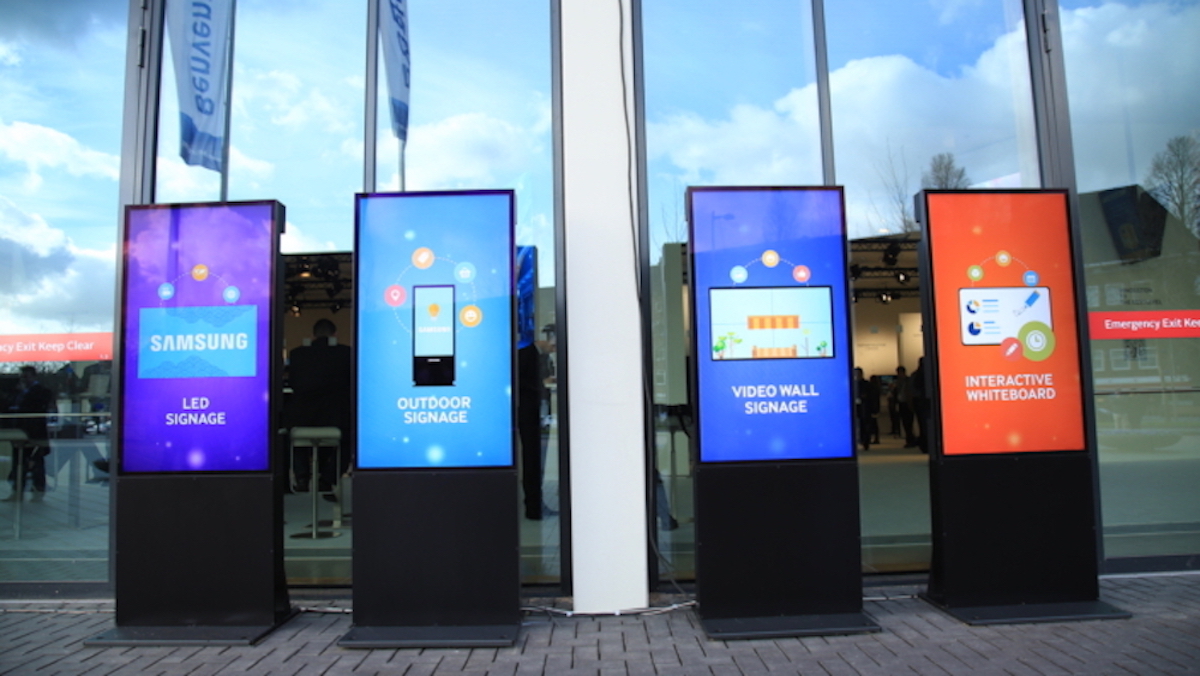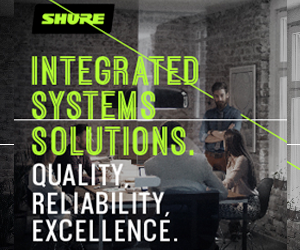12 Interesting Statistics About Digital Signage
You’ve probably wondered if digital signage is right for you. But where are the numbers that show that digital signage is a worthwhile investment?
We’ve dug through the studies to find statistics that do exactly that. Without further ado, here’s twelve interesting stats about digital signage.
Digital media in public venues reach more customers than videos on the Internet or Facebook.
Digital signs reach an astounding number of Americans: 70 percent have seen a digital video display in the past month, versus 43 percent on the Internet or 41 percent on Facebook.
Not only that, but 52 percent of teenage and adult Americans have viewed a digital display within the past week!
Other digital signage solutions get noticed big-time as well: 75 percent of travelers recall seeing a digital billboard within the past month.
Customers don’t just glance—they engage.
Digital signage makes an impression. Of those 70 percent of Americans who recall seeing a digital video display in the past month, 47 percent specifically recall seeing an ad. That’s nearly half! And of those travelers who remember spotting a digital billboard, 82 percent recall that it was displaying an ad.
Consumers are more likely to look at digital signage longer than a non-digital sign.
A study conducted found that drivers spend significantly longer looking at the digital billboards they pass than traditional billboards. It’s not surprising: a bright, colorful, animated display would logically be more eye-catching than a static one.
(However, they concluded they probably didn’t gaze long enough to become dangerously distracted, as some groups had claimed drivers might—which is certainly good news!)
Consumers are more likely to remember a digital sign
It’s a fantastic way to raise brand awareness. Recently, it was found that of those who saw a digital billboard, 55 percent could recall the specific message displayed every time they passed one.
The same study also looked at specific ad campaigns, and found that travelers who had passed the billboards could remember specific ads from those campaigns up to 89 percent of the time. That’s some serious effectiveness!
Digital signage counts for deep impressions
Of the surveyed customers in the study mentioned above, 71 percent said they felt advertising on digital billboards stood out more than online ads, and 46 percent said they were more prominent than even television ads.
Digital signs can drive impulse buys.
Have you ever caught sight of an advertisement and suddenly realized that you had, for example, been craving a KitKat bar all day? Then you’ve joined the 19 percent of consumers who claim to have made unplanned, impulse purchases of products they’ve seen advertised digitally.
They don’t go stale as quickly as static signs.
One study used anonymous video analytics to log the number of people who noticed both static and digital signs at multiple locations. The number of “impressions” (that is, people paying attention) logged by the static sign peaked on its first day in place. After that, they dropped off and remained low for the remaining weeks of the study.
But the digital signs received consistently high numbers of impressions throughout the study—receiving almost as many every day as the static sign received the first day. This suggests that while it’s easy to look past a sign that just sits there after the first time you’ve seen it, it’s hard to ignore even a familiar digital sign.
They motivate customers to action.
During the same study mentioned above, static signs and digital ads were posted that prompted customers to go to the help desk and receive a free tote bag. (One location received just static signs; two had digital. The two locations received similar amounts of customers during the experiment.)
During the entire experiment, only six people took up the offer in the location with the static sign. But a combined total of 610 people grabbed totes in the locations with digital signs. That’s over 100 times more!
A 2010 Nielsen study on the effectiveness of Point-of-Sale digital signage advertising found some truly fascinating results, especially compared to other methods of POS advertising.
Previous studies on other methods of POS advertising found only slight increases in unprompted brand awareness.
Digital signage ad buy ROI goes further
When asked about specific brands after being exposed to digital POS advertising, shoppers exhibited a 31 percent increase in brand awareness and recall. Even when not asked about specific brands, they still showed a 14 percent increase.
Digital signage isn’t only useful for businesses
Businesses aren’t the only entities taking advantage of digital signs. Universities around the world are installing digital signage networks (DSNs) to promote campus events, advertise for their bookstores and third-party vendors, spread emergency alerts, show weather information, and more.
In fact, in 2011 alone, around 2240 universities in the United States installed DSNs. That’s about a 46 percent increase from 2010.
Customers will stick around.
One study by InfoTrends found that installing digital signage in stores encouraged customers to spend up to 30 percent more time browsing.
Digital signage is affordable
WireSpring has been tracking the pricing of digital signage since 2004. Between 2004 and 2010, they discovered that the price of installing a hundred-node DSN and operating it for three years had decreased by more than half!
Bringing It All Together
No matter what type of digital signage you’re considering, there are loads of statistics out there to convince you that it’s a great investment with a technology that’s still on the rise.
From increasing brand recognition to keeping customers happy, digital signage can do a lot for you. And there’s numbers to back that up.
About Author
Related Posts
Popular
-

-
 The 17 Most Misunderstood Facts About AV Over IPJanuary 25, 2021 1
The 17 Most Misunderstood Facts About AV Over IPJanuary 25, 2021 1 -
 12 Interesting Statistics About Digital SignageJune 3, 2020 0
12 Interesting Statistics About Digital SignageJune 3, 2020 0 -
 9 Dos and Don'ts for Videoconferencing SecurityJune 29, 2020 0
9 Dos and Don'ts for Videoconferencing SecurityJune 29, 2020 0 -
 Does Your Podcast Pass the Twitter Test?October 27, 2020 0
Does Your Podcast Pass the Twitter Test?October 27, 2020 0


Leave A Reply